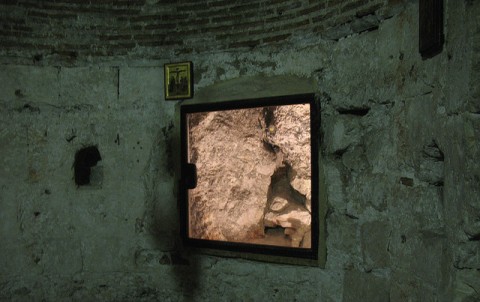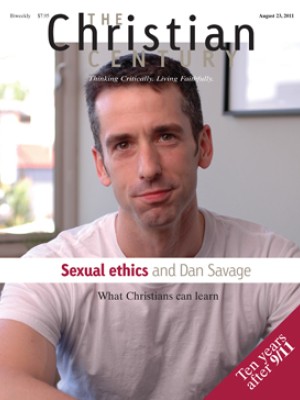Biblical mystery tour

The first time I visited Jerusalem, Saddam Hussein was invading Kuwait. My stay at Saint George's College began with a safety drill that included some mention of gas masks, which made me a light sleeper for the rest of my stay. During the 20 years since, I've wondered how much I missed while straining to hear the whine of SCUD missiles overhead.
In June I returned to find that much had changed. The last time I entered the Old City through Damascus Gate, soldiers patrolled the parapet above my head. This time the ramparts were empty. Last time I had a month to explore the city; this time I was on a day tour. Last time I had working scholars for guides; this time I had an affable Brit who looked older than the picture on his ID.
Read our latest issue or browse back issues.
What had not changed were the questions people asked. Is this the real Upper Room? Are we on the Via Dolorosa yet? How long do olive trees live? Could Jesus have prayed under one of these? Questions like these have brought pilgrims to the Old City for centuries, regardless of whose missiles might be flying overhead. They want to know where the treasure is hid.
Hearing them again after 20 years, I listened more for intent than content. Some people in my group focused on the details of their fundamental narratives, working hard to square truth with fact, while others picked at any loose joints they could find. My guide was such a pro that he found ways to make sure they all won something without ever revealing his own hand.
So many tour groups stood pressed together that I could hear other guides' answers too. Some practiced historical tact ("Olive trees live a long time, so it is possible that Jesus prayed under one of them"), while others used scripture to authenticate sites ("See that flaw in the stone? Now will someone please read Matthew 21:42 out loud?").
Listening to the guides, I decided there was a niche market going to waste. Surely there were ten or 12 people a day who would sign up for a Mystery Tour of Jerusalem, designed to deepen their questions instead of answering them.
Are we on the Via Dolorosa yet? We might be. Since the street Jesus walked on was at least 20 feet below this one, "close" is as close as we can get. Even if you dug straight down, you could not find his footprints. His followers covered those right up.
Was Jesus really crucified here, just feet away from his tomb? No one knows for sure. Constantine's mother thought so, which is why a church was built here. But there is another site outside the city walls, behind an old bus station, that might have been the place. Both of the rock formations look like skulls. Both have their advocates, but if you had to choose between a bus station and a church . . .?
Did Mary really die in Jerusalem? She could have. Visit the Abbey of the Dormition and you can say a prayer at a tomb with her likeness on it, but another tradition puts her in Ephesus. Her house there is so green and breezy that it can change your whole idea of her. After all that death, she lived by a spring with a view of the sea. After all that shouting, she woke to birds. At least maybe she did.
Surely there are a few believers willing to surrender their grip on one story in order to have two or more—with arrows pointing in different directions and endings that can never be reconciled—because they are convinced there is more truth in the mystery held open by the corners of the stories than in the certainty of just one.
Jesus told a very short story about a man who finds a treasure and hides it in a field. Then in his joy he goes and sells all that he has and buys that field. The end.
But why does the man assume that he cannot have the treasure without buying the whole field? I have no idea. All I know is how quickly the treasure takes over the story—the finding of it, the hiding of it, the joy of knowing where it is, the digging up of it in the end. Where is the treasure hid? That is what most of us want to know.
The man in the story does not care. Once he buys the field, the story ends—or at least this one does. Soon there will be more stories sprouting up all over, for once the treasure is in the field, the whole field becomes the treasure. It could be here. Then again, it might be over there.
Maybe digging it up again was never the man's plan. Maybe the plan was to leave it right where it was, so that no matter where people walked in that field, they could imagine the treasure right under their feet.






